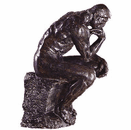Food Chains and Food Webs (Enhanced DVD)
Product Description:
In nature's food chain, there are producers and consumers, carnivores, herbivores, and omnivores. With the exception of a few carnivorous plants, the plants are producers of food for others to eat. Herbivores eat only plants, but not all types of plants because of their digestive systems they may be able only to eat a certain kind of plant. Cows and horses eat grass, but mountain gorillas only eat leaves and not grass. Carnivores eat meat from other animals or consume insects. Carnivores include lions, tigers, and some species of frogs as well. Omnivores eat both meat and plant material. Omnivores include animals like bears that eat fish, berries, small animals, and insects.
There are also scavengers, like vultures and hyenas and those who are decomposers like bacteria and other microorganisms. These creatures do not necessarily kill anything. They only eat was has already been killed by others or decompose the things that died.
This DVD discusses the difference between food chains, which have three levels of order and food webs, which show the interconnectedness of who eats what type of food in the food chain. Plants are the lowest order on the food chain. The next higher order is small animals and insects. The third and highest order on the food chain is the major predators and human beings, who literally eat almost everything else. A food web is a graphical illustration of how plants and animals intertwine with each other as part of a food chain.
Food Chains and Food Webs
- Enhanced DVD
- ISBN: 978-1-62290-785-4
- Run Time: 16 Minutes
- Copyright Date: 2012
- CC
- Public performance rights included

















